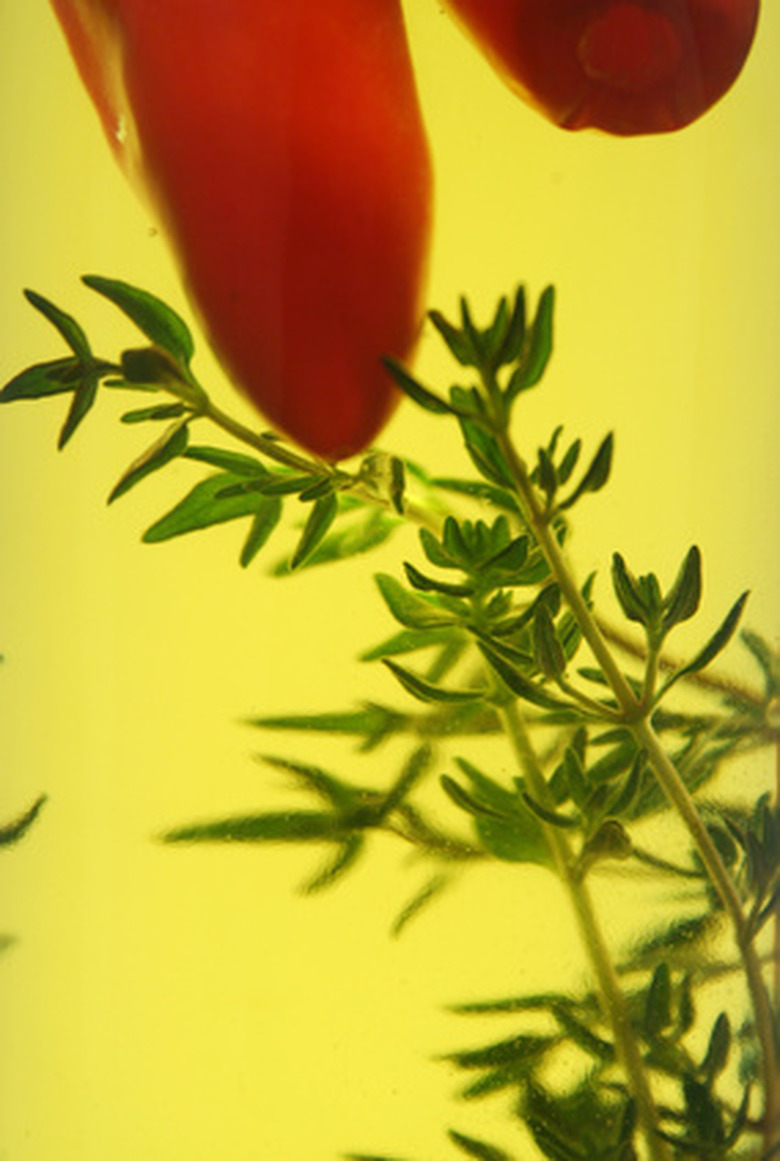Wild Thyme Leaf Identification
Wild thyme leaves can be identified by scent, looks, location and a few other considerations. Whether the thyme is the bushy type or the mounding, creeping type, the leaves still look and smell recognizably similar. Over 150 species of thyme exist, many of which may be found in the wild.
Scent
Wild thyme is most recognizable by its distinctive scent, which is released as soon as the leaves are rubbed against or crushed underfoot. All plants in the thyme genus smell similarly musky, rich and aromatic, although there will be slight variances between species.
Visual Description
Wild thymes are small and bushy and sometimes may be creeping mats reaching slowly across the landscape. Their branches are a thin and nondescript brown or dark green and will break off easily in a gardener's hands. Their leaves are tiny, come to rounded points, and may range in color from silvery to blue-green. Green colors are usually dark or bright, but not light green. The leaves are are completely smooth, not at all hairy or spiny.
- Wild thyme leaves can be identified by scent, looks, location and a few other considerations.
- Wild thyme is most recognizable by its distinctive scent, which is released as soon as the leaves are rubbed against or crushed underfoot.
Location
Most thyme plants (including wild thyme) prefer full sun, although some will grow in partial shade. Wild thymes are not very particular about soil type and will do well in neutral or slightly alkaline soils. They do not like swampy areas, instead preferring drier ground. They may grow over rock mounds, in between areas of sidewalk and in small areas of dirt on patios, as well as out in areas heavily populated by other greenery.
Considerations
Small thyme flowers may appear above the leaves, ranging in color from white to pink to yellow. Like the leaves, these are edible, although their flavor will not be as great.
Warning
English thyme (Thymus vulgaris) is the type most commonly used in culinary applications. Other types of thyme, including wild thymes, are also edible. Not all are, however. Members of the thyme family are not poisonous, so a curious gardener runs a very low risk if he chooses to try a little to see if he would like to cook with it. Some wild thyme leaves may simply not taste very good, however.
- Most thyme plants (including wild thyme) prefer full sun, although some will grow in partial shade.
References
- The Ultimate Herb Book; Antony Atha; 2001
- National Gardening Association: Growing Thyme
- Fine Gardening: Thyme, the Fragrant Ground Cover
